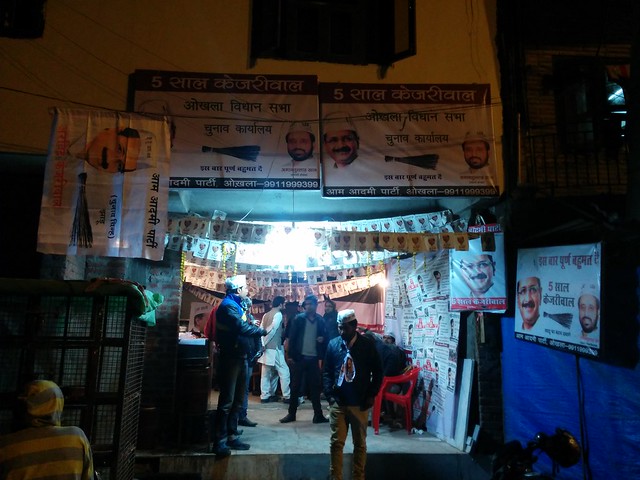By Soroor Ahmed, TwoCircles.net,
Rarely in 68 years of Indian history the gap between the winning party and the runners up been so wide as this time in the Delhi election. With 54.30 per cent votes the Aam Admi Party got 22.1 per cent more votes than the Bharatiya Janata Party, which ended up getting 32.2 per cent.
Though the apologists of the BJP are consoling themselves by claiming that the party has maintained to hold its support base by getting around 32.2 per cent votes against 33.07 per cent in the December 2013 Assembly election yet what is forgotten is that in Delhi this time the contest was almost straight unlike then when the Congress was very much in the fray. As the then ruling party it got 24.55 per cent votes
last time against 9.7 per cent this time.

In straight contest, for example in West Bengal Assembly election of 2011, the Left Front was almost decimated thought it got 41.12 per cent votes––10 per cent more than the BJP in Delhi this time. Against this Trinamool Congress-Congress alliance, which won two-thirds majority secured 48.54 per cent votes, just 7.12 per cent more than the Left Front. By that logic the Left in West Bengal should claim that it is
much stronger than the BJP in Delhi now.
In between the two Assembly elections in Delhi the country elected its Lok Sabha. In that the BJP got 46.1 per cent votes in Delhi and won all the seven seats. In that respect the BJP got about 14 per cent less votes this time against the May election. The AAP got 32.9 per cent and Congress 15.1 per cent.
Apparently the argument may be simple: the entire Congress votes shifted to the AAP. But then why to AAP and not to the BJP, when it is in power in the Centre and was in the winning spree.
The AAP votes jumped by huge 24.81 per cent in just 14 months––from 29.49 to 54.30 per cent.
The logic that the core group of 32 per cent is intact does not hold much water.
Similarly, the RJD-led alliance in Bihar got 30 per cent votes in the 2014 Lok Sabha poll but ended up getting just seven seats against the BJP-led alliance 31 seats when it its vote share was 39 per cent.
Not to forget that the BJP itself got just 31 votes nationally and got 282 seats on its oan in Lok Sabha.
What is worth worrying for the BJP is why so overwhelming number of voters suddenly turned away from it.
It is no mean achievement for any party to increase its percentage by 24.81 per cent as AAP did in adverse situation in just 14 months. In a much better situation the ruling BJP got 0.87 per cent less votes.
In the recent Assembly elections in Haryana, Maharashtra, Jharkhand or even Jammu and Kashmir the BJP was greatly benefited by the division of votes in the rival camps.
Otherwise its performance is not as startling as of AAP in Delhi. In the first past the post multi-party system rarely does any party get more than 50 per cent votes.
If the BJP is worried of merger of Janata Dal (United) and Rashtriya Janata Dal in Bihar it is because it would turn the whole fight straight.
If the last year Lok Sabha performance of the BJP is repeated in Bihar it may end up getting 39 per cent votes. By the same logic if the RJD-led alliance’s 30 per cent is added up with the JD(U)-led alliance’s 17 per cent the figure would touch 47 per cent.
So AAP’s performance in Delhi has compelled the two regional satraps of Bihar to come further closer and merge their respective parties. The BJP, on its part, is re-drawing its own strategy.
——-
(Soroor Ahmed is a Patna-based freelance journalist. He writes on political, social, national and international issues.)
